Keywords
|
| Wireless Sensor Networks, Distributed Systems, Microcontrollers, signal processing |
INTRODUCTION
|
| As the world's population ages, those suffering from diseases of the elderly will increase.In-home and nursing-home pervasive networks may assist residents and their caregivers by providing continuous medical monitoring,memory enhancement, control of home appliances, medical data access, and emergency communication.Researchers in computer, networking, and medical fields are working to make the broad vision of smart healthcare possible. The area of wireless sensor networks for medical applications there are three main research directions: power consumption optimization, security method development for medical data transmission, management of the wireless sensor networks. Wireless physiological data monitoring system uses a radio channel to send real time vital sign data from wearable biomedical sensor devices to a coordinator. Patients can wear wireless devices that sense Physiological conditions and send the sensed data to their doctors in real time. Wireless health monitoring systems have several advantages compare to wired health care equipment. First, patients no longer waste waiting time to meet their doctor. Moreover, the use of wireless healthcare systems outside the hospital helps to save the healthcare cost for care providers. It also allows many patients to work while they are still under their doctor’s care. Second, such systems can alert any medical emergency if specific vital signs change drastically. |
MAIN GOAL
|
| We are developing a network architecture for smart healthcare that will open up new opportunities for continuous monitoring of assisted and independent-living residents. While preserving resident comfort and privacy, the network manages a continuous medical history. Unobtrusive area and environmental sensors combine with wearable interactive devices to evaluate the health of spaces and the people who inhabit them. |
| Multiple patients and their resident family members as well as visitors are differentiated for sensing tasksand access privileges. |
| The fundamental elements of future medical applications (integration with existing medical practice and technology, real-time and long-term monitoring, wearable sensors and assistance to chronic patients, elders or handicapped people), our wireless system will extend healthcare from the traditional clinical hospital setting to nursing and retirement homes, enabling telecare without the prohibitive costs of retrofitting existing structures.The advantages of a WSN are numerous for smart healthcare, as it provides the following important properties: |
| • Portability and unobtrusiveness |
| • deployment and scalability |
| • Real-time and always-on |
| • Reconfiguration and self-organization |
| Background: Wireless Sensor Networks are a key technology for ambient assisted living. |
| A reasonable use case is the observation of vital parameters, e.g. blood pressure, respiration and motion. Using a mobile device (e.g. PDA or Mobile), the parameters can be retrieved and processed. |
HIGH LEVEL SYSTEM ARCHITECTURE
|
| As shown in figure below, The medical sensor network system integrates heterogeneous devices, some wearable on the patient and some placed inside the living space. Together they inform the healthcare provider about the health status of the resident. Data is collected, aggregated, pre-processed, stored, and acted upon Using a variety of sensors and devices in the architecture (pressure sensor, RFID tag).Traditional healthcare provider networks may connect to the system by a gateway, or directly to its database. Some elements of the network are mobile ,while others are stationary. Some can use line power, but others depend on batteries .If any fixed computing or communications infrastructure is present it can be used, but the system can be deployed into existing structures without retrofitting. |
| A)Body Network and Subsystems: This network comprises tiny portable devices equipped with a variety of sensors (such as heart-rate, heart-rhythm, temperature ,ox meter, accelerometer), and performs biophysical monitoring, patient identification, location detection, and other desired tasks. These devices are small enough to be worn comfortably for a long time. |
| B)Emplaced Sensor Network: This network includes sensor devices deployed in the environment (rooms, hallways, furniture) to support sensing and monitoring, including:(temperature, humidity, motion, acoustic, camera,etc).It also provides a spatial context for data association and analysis. All devices are connected to a more resourceful backbone. Sensors communicate wirelessly using multi-hop routing and may use either wired or battery power. |
| C)Backbone: A backbone network connects traditional systems, such as PDAs, PCs, and databases, to the emplaced sensor network. |
| D)Back-end Databases: One or more nodes connected to the backbone are dedicated databases for long-term archiving and data mining. If unavailable, nodes on the backbone may serve as in-network databases. Human Interfaces. Patients and caregivers interface with the network using PDAs, PCs, or wearable devices.These are used for data management, querying, object location, memory aids, and configuration, depending on who is accessing the system and for what purpose. |
REQUIREMENTS FOR WIRELESS SENSOR NETWORKS
|
| Wireless medical sensors should satisfy the main requirements such as wearability, reliability, security, and interoperability. |
| A) Wearability: Achieve non-invasive and unobtrusive continuous health monitoring, wireless medical sensors should be light weight and small .The size and weight of sensors is predominantly determined by the size and weight of batteries.But then, a battery’s capacity is directly proportional to its size. |
| B)Reliable communication: Reliable communication in WWBANs is of almost importance for medical applications that rely on WWBANs. The communication requirements of different medical sensors vary with required sampling rates, from less than 1 to 1000 Hz. One approach to improve reliability is to move beyond telemetry by performing on-sensor signal processing. In addition to reducing heavy demands for the communication channel, the reduced communication requirements save on total energy expenditures, and consequently increase battery life. |
| C) Security: Another important issue is overall system security. The problem of security arises at all three tiers of a WWBAN-based. |
| D)Interoperability: Wireless medical sensors should allow users to easily assemble a robust WWBAN depending on the user’s state of health. Standards that specify interoperability of wireless medical sensors will promote vendor competition and eventually result in more affordable systems. |
SENSOR SOFTWARE
|
| The sensor boards handle acquisition of physiological signals and pre-processing. For example, the ISPM samples three independent accelerometer axes each at a rate of 200 Hz. The raw accelerometer data is filtered and preprocessed. The filtering includes moving an average filter to eliminate high frequency movement artifacts, and separation of low and high frequency components of the acceleration signal. Sensor orientation can be calculated as the angle between low frequency accelerometer components. User activity is estimated with a function based on the Sum of the integrals of the AC components in each channel. |
SECURITY IN WIRELESS SENSOR NETWORK
|
| Security requirements in wireless sensor networks must comply with, |
| A) Access control and message integrity – should prevent unauthorized parties from participating in the network. Nodes should be able to identify messages from unauthorized nodes. |
| B) Confidentiality – only authorized sensor nodes will be able to access data from the network. This requirement is achieved using encryption. Several encryptions were adapted to wireless sensor networks such like RC5 or skipjack. |
| C)Protection against replay attacks – is solved using monolithically increasing counter with every message and reject messages with old counter values . The replay attack protection is not scalable at the link layer. For this reason this is solved at the application layer using topological information and traffic pattern information. |
ADVANTAGES
|
| • Structural Health Monitoring (SHM) has the potential to dramatically reduce lifecycle costs. |
| • Minimizes labor costs associated with manual inspection. |
| • Increases profits by reducing system downtime |
| • Avoids unnecessary replacement of components based on time of use |
| • Detects system damage before catastrophic failure. Decrease the need for expensive repairs, and circumvent complete failure of the monitored structure. |
| • May be deployed adhoc |
| • Reconfigurable |
| • Includes cameras for visual inspection |
| • Avoids sending humans into hazardous environments |
| • extend the safe useful life of a structure. |
| • shrink insurance costs |
| • decrease the need for expensive repairs, and circumvent complete failure of the monitored structure. |
APPLICATIONS
|
| • Civil infrastructures |
| • Dams, dikes, hydroelectric power plants, pipelines, canals, tunnels, ports, harbors, waterways, and marine terminals, etc. |
| • Manufacturing equipment |
| • Aerospace systems |
| • Mechanical equipment |
SUMMARY
|
| After outlining the general idea in the introduction, the technical basics for wireless sensor networks were presented. The ongoing miniaturization allows to build tiny computers that are able to observe all kinds of physical phenomena. Structural Health Monitoring (SHM) has the potential to dramatically reduce lifecycle costs, extend the safe useful life of a structure, shrink insurance costs, decrease the need for expensive repairs, and circumvent complete failure of the monitored structure. In wired SHM systems, however, the cost of the wire itself can be a source of economic concern: While coaxial wires provide a reliable communication link, their installation and maintenance can be expensive and labor-intensive. The issues associated with wired SHM systems, therefore, have generated significant interest in wireless SHM solutions, as they could facilitate lower-cost deployment of a greater number of sensors. However, the adoption of contemporary wireless SHM technology has been limited due in part to its associated power sources, which must be installed at fixed locations on the structure. These power sources (typically batteries) will eventually be depleted requiring periodic sensor network maintenance. |
| In response to these problems, Los Alamos National Laboratory (LANL) engineers have developed a mobile-agent based wireless sensing network for SHM. LANL’s mobile-agent-based technology eliminates the disadvantages described above by integrating wireless energy transmission technology and remote interrogation platforms supported by unmanned vehicles to acquire the data necessary to assess damage in structural systems.The low cost of the sensor nodes and improved reliability achieved with the mobile agents makes the installation of potentially hundreds or even thousands of wireless sensors on a single structure economically feasible, which can greatly increase the damage detection capabilities of such monitoring systems. |
| |
Figures at a glance
|
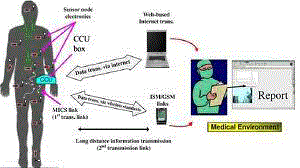 |
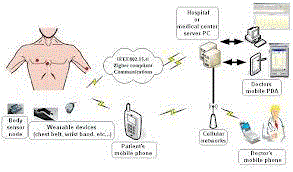 |
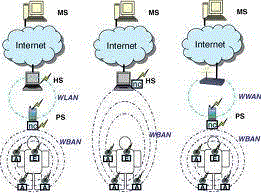 |
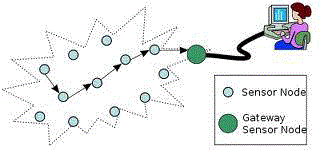 |
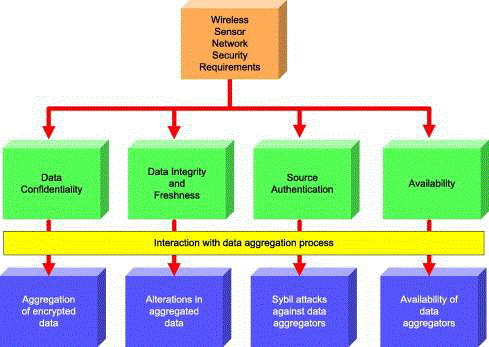 |
| Figure 1 |
Figure 2 |
Figure 3 |
Figure 4 |
Figure 5 |
|
| |
References
|
- National Coalition on Health Care, in: http://www.nchc.org/facts/ cost.shtml/, Accessed: June 2005.
- P. Binkley, Predicting the potential of wearable technology, IEEE Engineering in Medicine and Biology Magazine 22 (3) (2003) 23–24.
- Seiko Pulse Graph Wrist Watch, Available at: http://www.seikopgt. or.jp// (Japanese), Accessed: July 2005.
- Polar, Available at: http://www.polarusa.com//, Accessed: July 2005.
- Digi-Walker step counter, Available at: http://www.digiwalker.com/, Accessed: July 2005.
- Actigraph, Available at: http://www.mtiactigraph.com//, Accessed: July 2005.
- Holter Systems, Med-electronics Inc., Available at: http://medelectronics.com//, Accessed: July 2005.
- Cardio Micro Sensor, Available at: http://www.cardiomems.com/, Accessed: July 2005.
- T. Martin, E. Jovanov, in wearable computing for medical monitoring applications: a case study of a wearable ECG monitoring device, in: International Symposium on Wearable Computers ISWC 2000, Atlanta, October 2000.
- Intel.Digital home for aging in place. Available: http://www.intel.com/research/exploratory/digital%5Fhome.html.
- The assistive cognition project” – University of Washington. Available:http://www.cs.washington.edu/assistcog/
- Harvard University.CodeBlue project: Wireless Sensor Networks for Medical Care. Available:
- http://www.eecs.harvard.edu/~mdw/proj/codeblue
|